OrcaFlex 11.3 cracked release
OrcaFlex – World-leading software that goes beyond expectation
When it comes to dynamic analysis software, no other package comes close to the power, performance and capability of Orcaflex.
Proven time and time again in a myriad of applications, Orcaflex can transform the way you undertake analysis and design, giving you the speed, accuracy and ease of use that will make the whole process more simple and straightforward than ever before.
So whether you’re concerned with research, analysis or engineering, whether your work involves oil gas, wet renewables, oceanographic, seismic, defence or aquaculture, with Orcaflex, you’ll have the most powerful, flexible and responsive software at your command. And a uniquely wide range of benefits that will make a real difference to your business right from day one.
Tried and tested around the world for:
riser systemstransport, installation and decommissioningmoorings and global performancepipelay and pipelinesrenewablestowed systemsnumerous other applications, including aquaculture, cable-stayed structures, floating bridges, defence, marine renewables, factory cable routing and earthquake loading
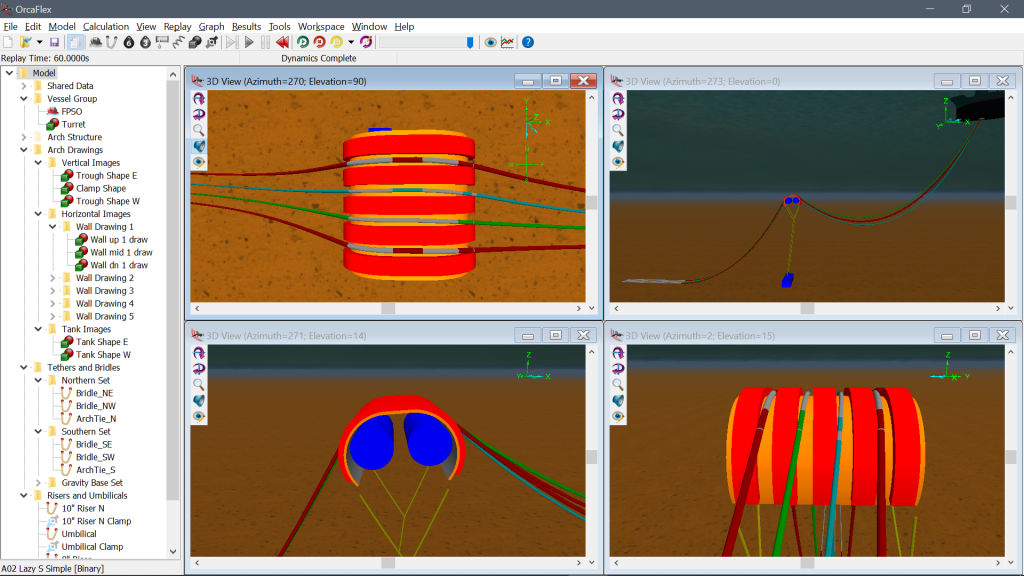
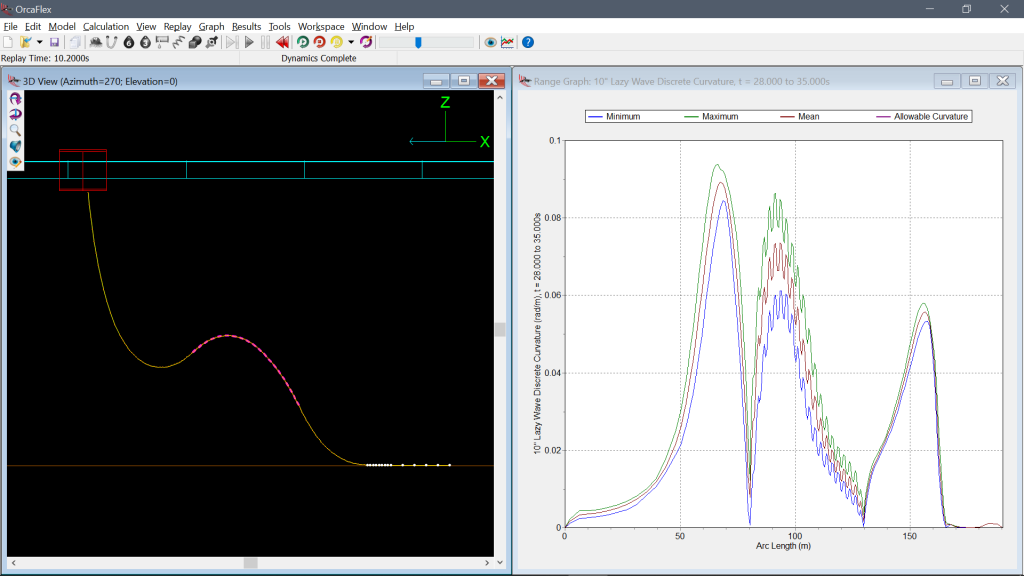
A first class approach
We prove it meets your needs – We’ll provide a demo and example model so you can test and evaluate software capability before you buy.
User Friendly – We provide a variety of pre post processing options, best in class user interface and visualisation of the working simulation so you can check errors as you go.
An integrated software package renowned for its breadth of technical capability
Competitively priced to help you get the best value from your investment – purchase, leasing and discount options with robust maintenance, upgrades and support contracts.
Best in class service and support – we encourage you to check our support during your evaluation process.
Quality Assured
OrcaFlex is developed using a robust quality assurance, testing and validation process, giving our customers the confidence to manage risk, reduce inefficiencies, validate and improve their designs.
OrcaFlex has a very wide range of applications, including:
RISERS:
Tensioned marine risersSteel Catenary Risers (SCRs)Hybrid Riser systemsFlexible RisersUmbilicals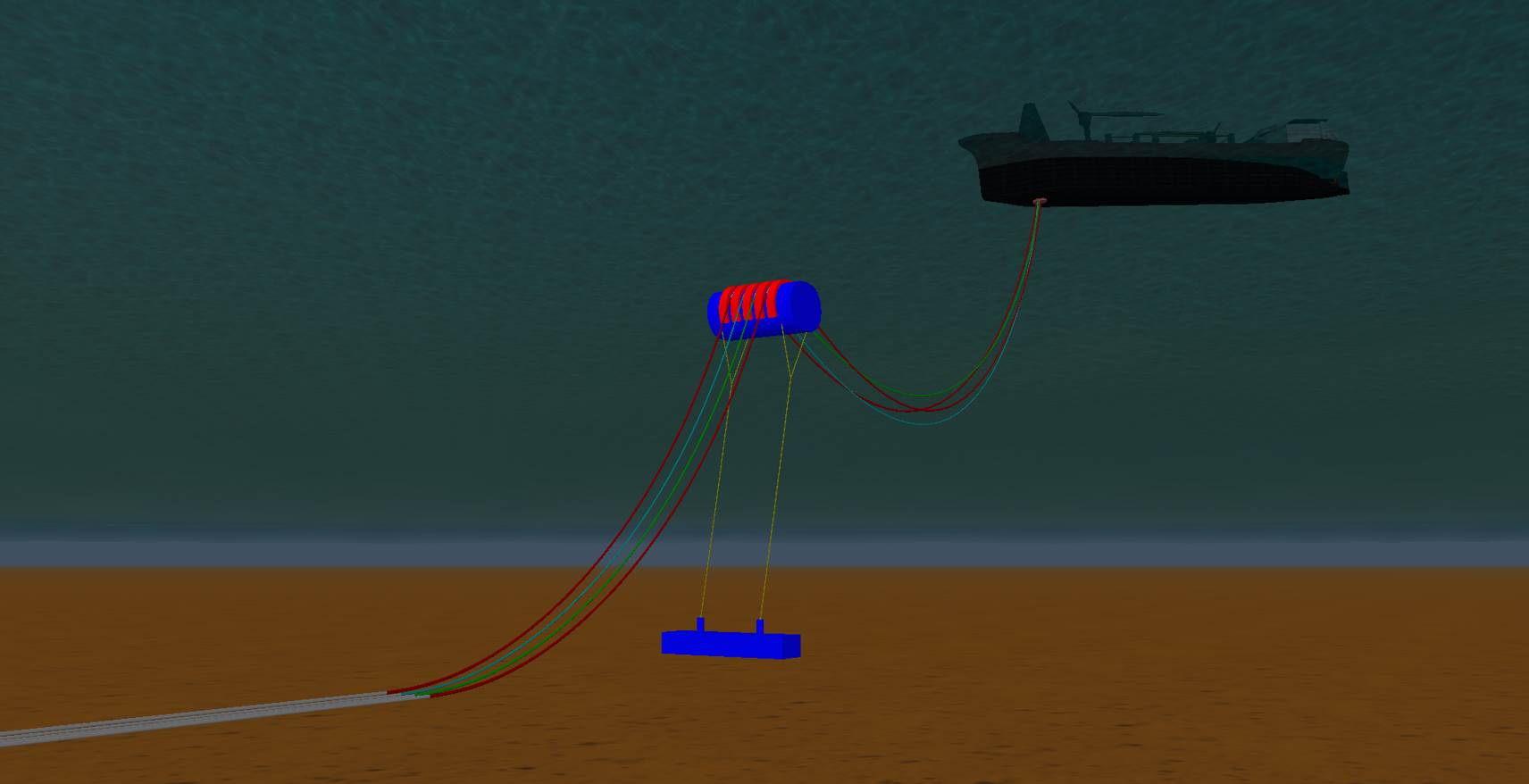
MOORINGS:
Spread mooring systemsJetty mooring systemsTurret (external and internal) moored systemsSingle Point MooringsOceanographic mooring systemsAquaculture mooring
INSTALLATION ANALYSIS:
Pipelay analysisAnchor and mooring deploymentRiser installationCable lay dynamicsThrough-splash zone deploymentDeep water installation of subsea hardwareSeabed plough deployment and operationOffshore lift dynamicsDeflect-to-connect and cross-seabed pull-inJ-Tube pull-inStab and Hinge simulation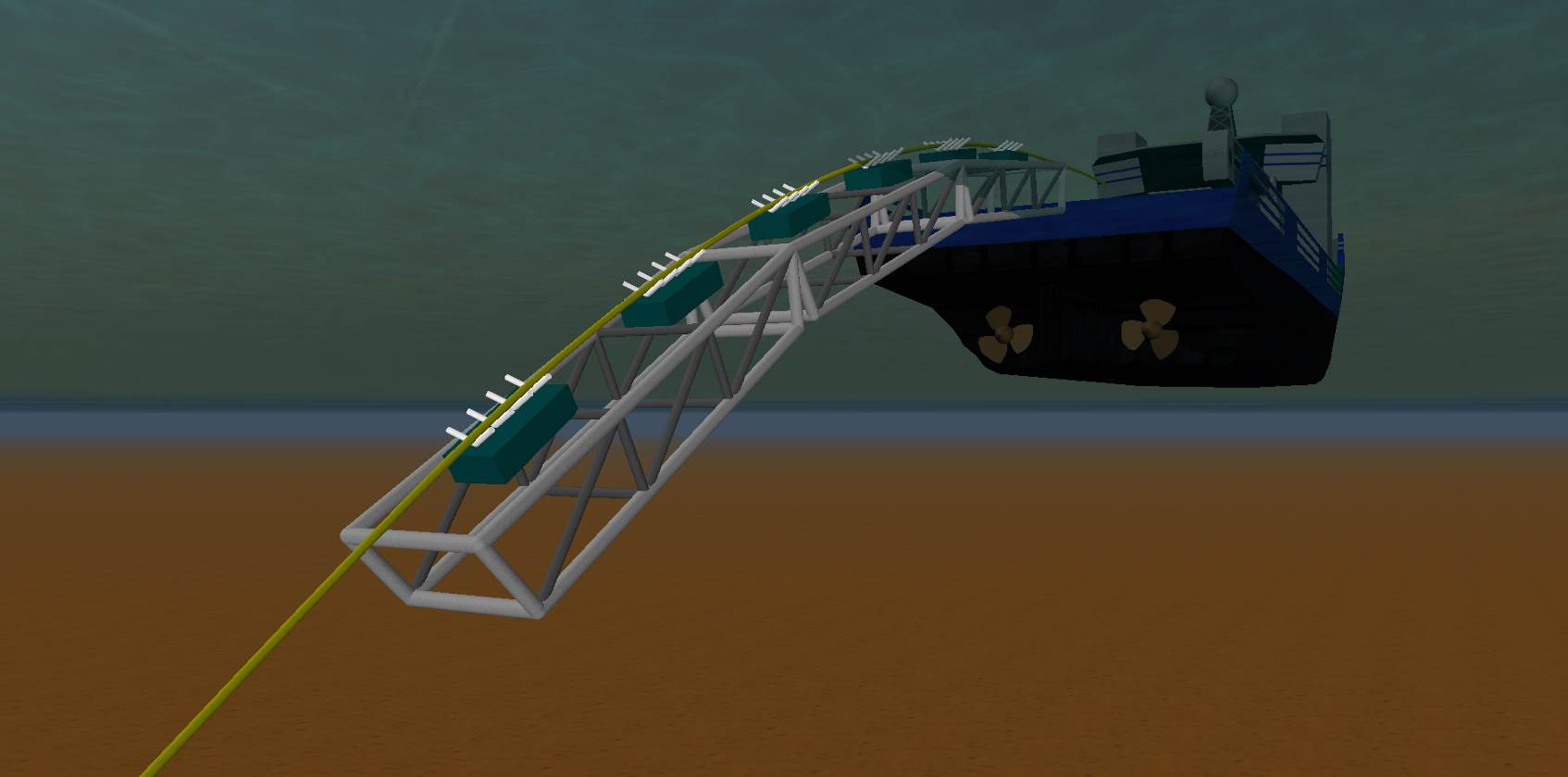
BUOY SYSTEMS:
CALM buoysSPAR buoysMid-water archesMetocean buoys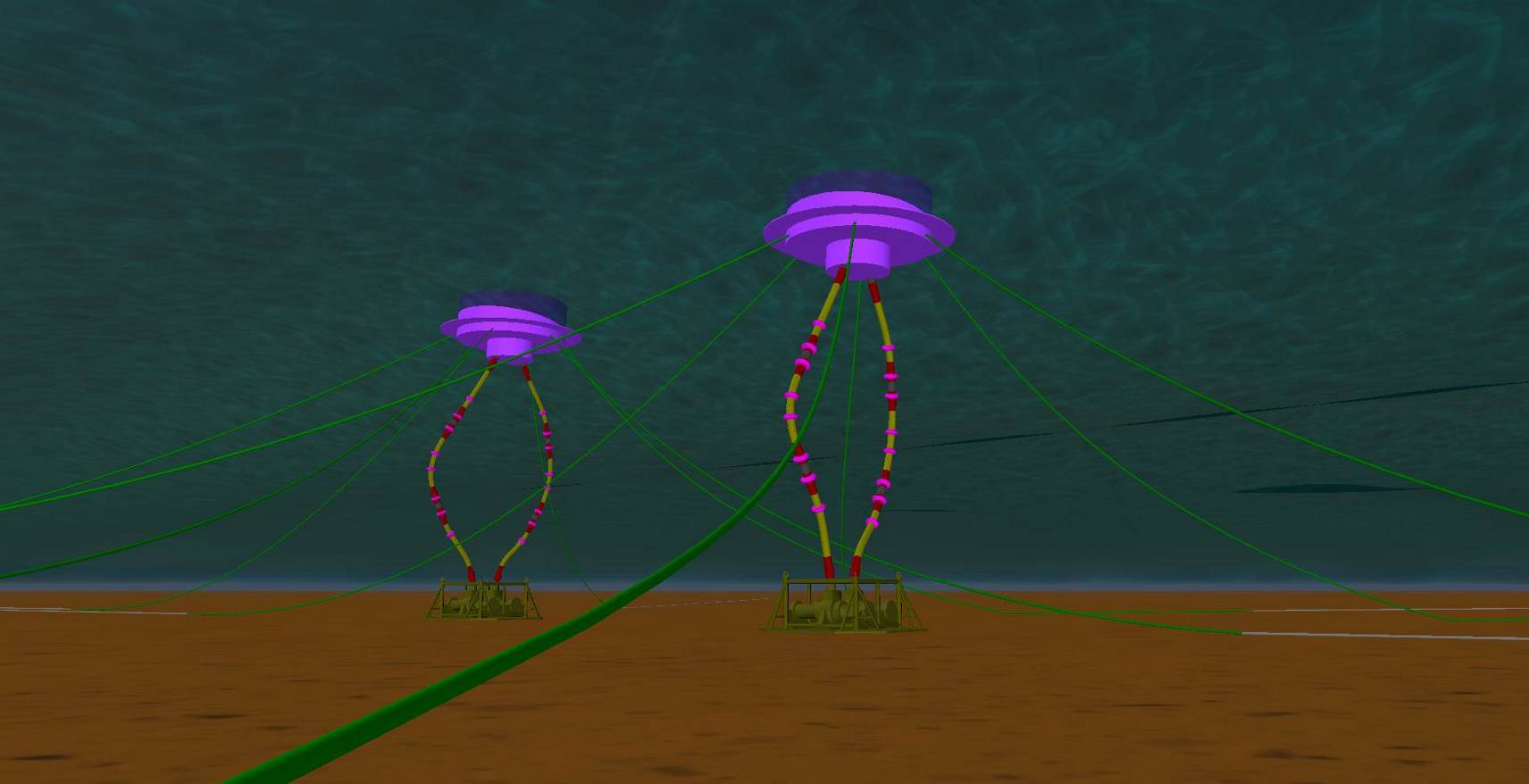
HOSE SYSTEMS:
Under-buoy hosesOffloading hosesFloating hoses
TOWED SYSTEMS:
Towed bundle dynamicsSeismic arraysTowed bodies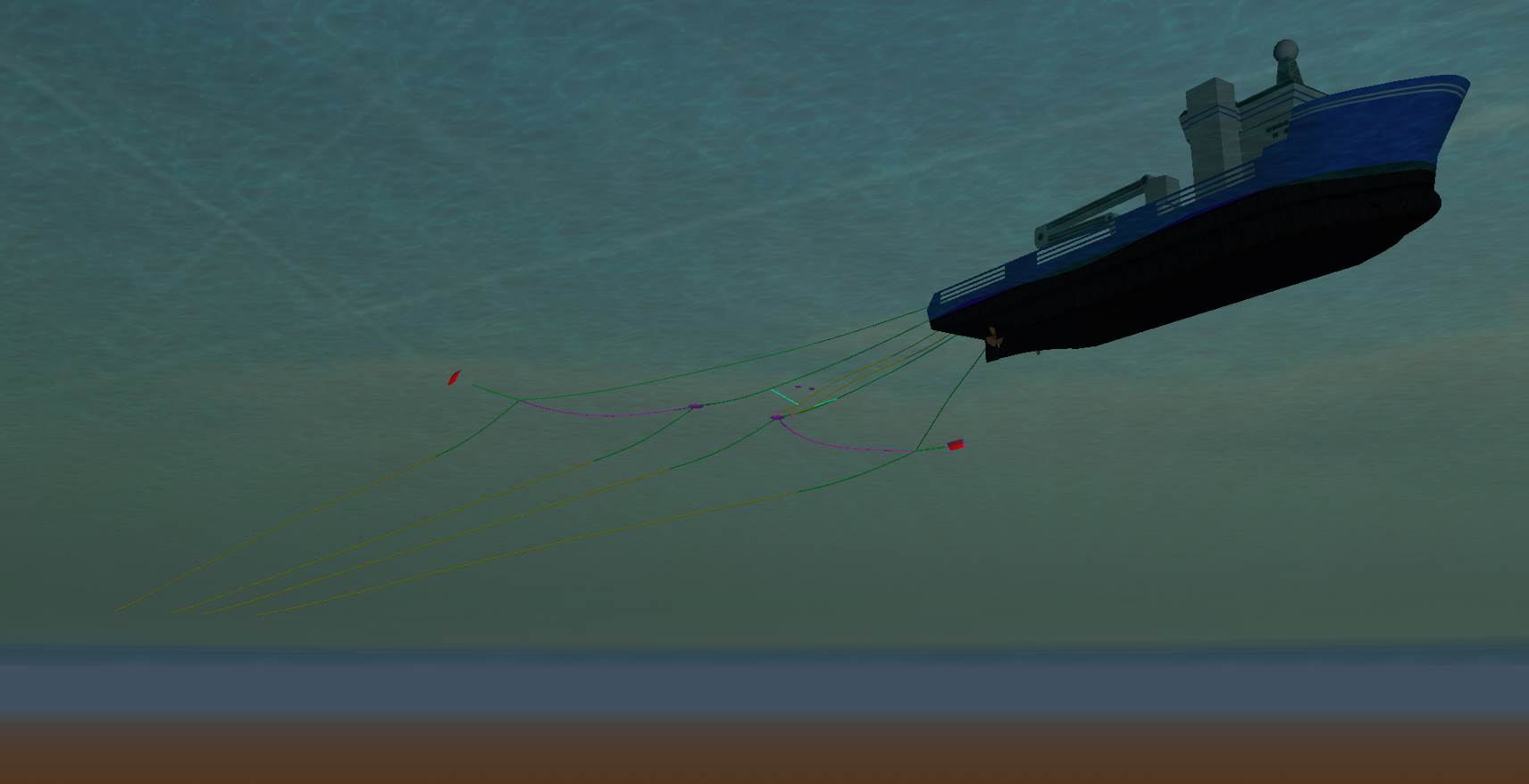
DEFENCE:
Minesweeping studiesShip-to-ship replenishmentDunking sonar modellingHelicopter landing systemsFloating protection booms and nets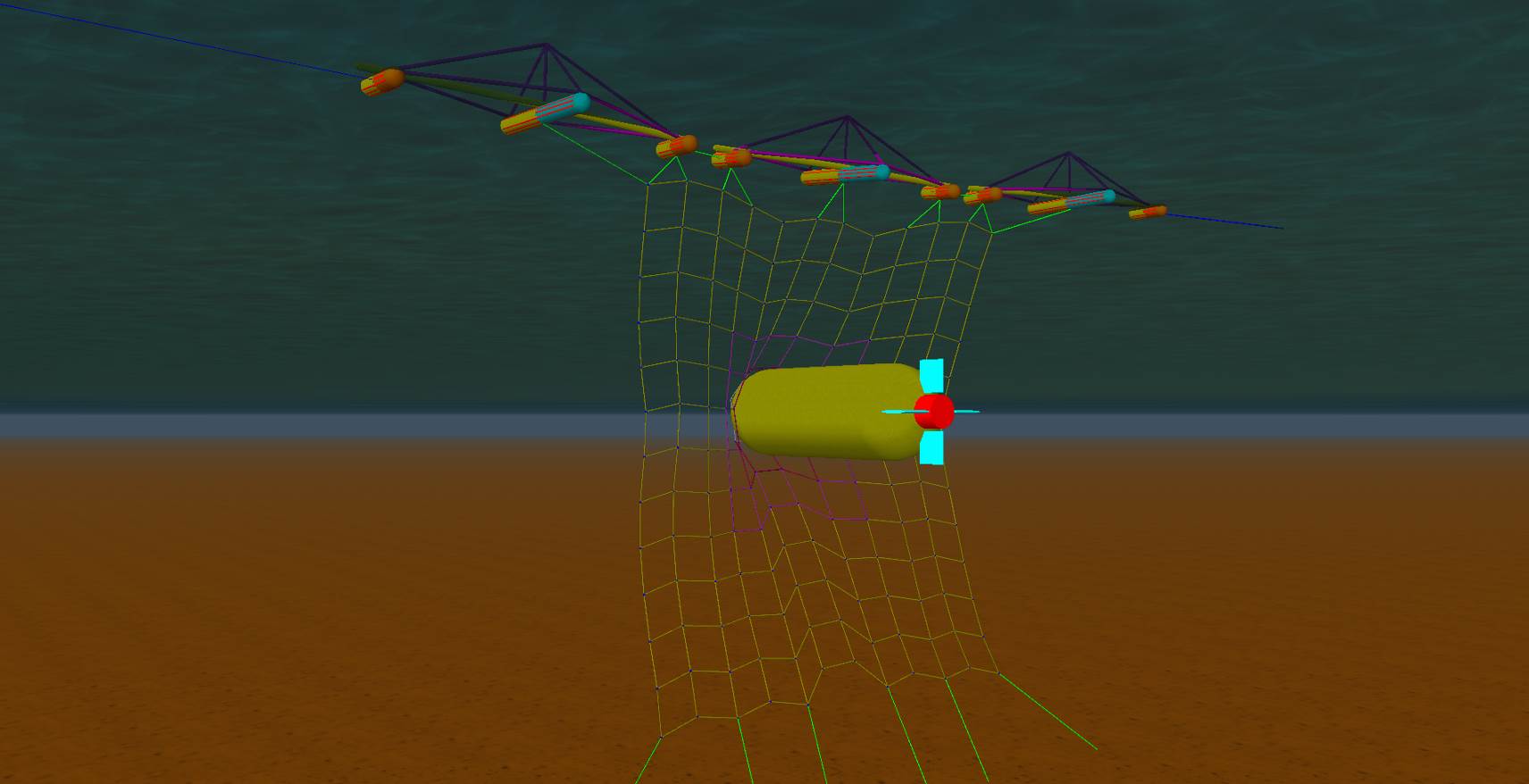
RENEWABLE SYSTEMS:
Wave power systemsOffshore wind farm installationWind turbine modellingPower cable take-offFloating wind turbines (with optional FAST coupling)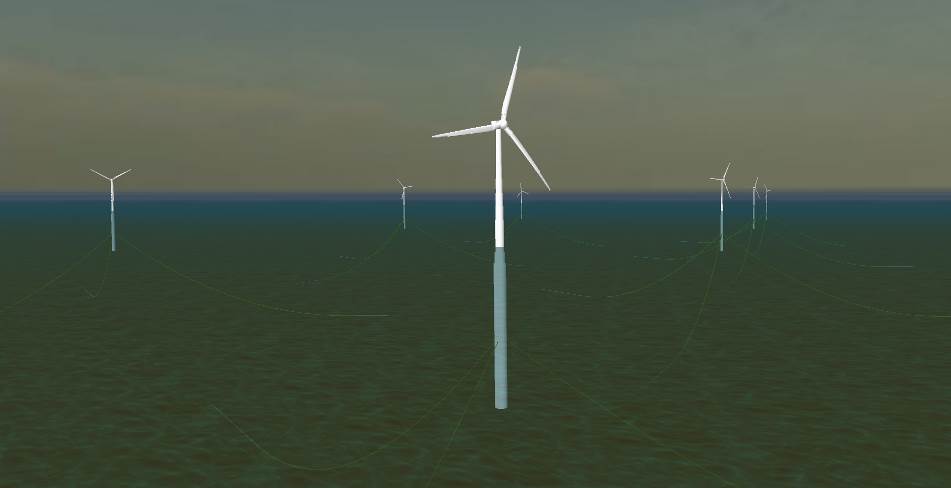
MISCELLANEOUS:
Seabed stability analysisROV footprint analysisSea fastening designAquaculture marine security netsCarousel and reel loadingDecommissioning and heavy liftFloatover and mating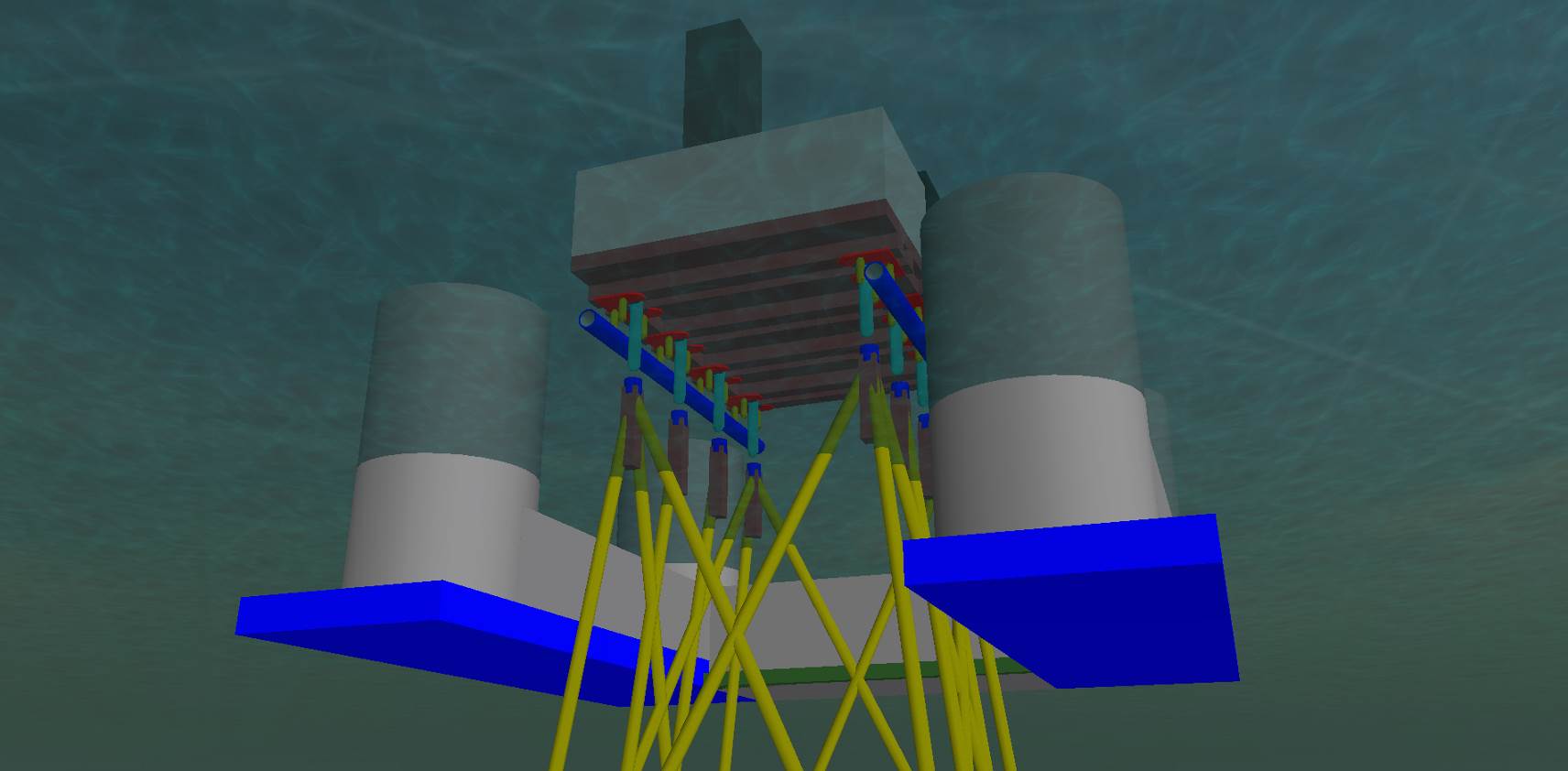
Summary of key features
3D, nonlinear, large displacement analysisFully coupled tension, bending torsionAccurate, efficient and proven FE formulationRobust line compression / snatch modellingExternal line-on-line clash sliding contactInternal line-in-line impact sliding contactModelling of post-contact behaviourLinear nonlinear elastic contact stiffnessUser-defined seabed tangential resistance profiles for linesLine slug flow and free-flooding effectsTabular contents modelling expansion tablesTruss structure modelling toolsNonlinear time domain (implicit explicit)Linear frequency domain (1st 2nd order)Quasi-dynamic analysisRestart analysisDiffraction analysis (OrcaWave)Constraints to fix or impose individual DoFsLine feeding (haul in and pay out nodes)Fully coupled vessel – line analysisFully coupled wind turbine analysisComprehensive vessel load modellingMulti-body hydrodynamic couplingFull sum and full difference QTFsVessel wave shielding (sea state RAOs)Water entry exit slam loadsFull description of wind, wave and currentFlat, 2D or 3D seabed profileLinear elastic, non-linear hysteretic P-y soilBinary and/or text input filesFatigue analysisExtreme value statisticsModal analysisVIV and interference analysisPipelay and riser code checksComprehensive range of automation toolsComplete Matlab, Python DLL interfacesParallel processing (at no extra cost)Batch processing for volume analysesDistributed OrcaFlex optimises multi-licence useFull GUI with wire frame and shaded views
Major changes in last two releases
Version 11.3 (November 2022)
Tabular contents modelling and expansion tablesTurbines: unsteady aerodynamics, improved performanceOrcaWave: dipoles, mean drift full QTFs, Morison element added mass and fluid inertiaRestarts: line feeding, mid-simulation restarts, collated results via APITruss structure modellingDNV ST F101 2021 code check updateMorison element added mass and fluid inertiaEmbedded Python optionally included in OrcaFlex installation
Version 11.2 (November 2021)
Seabed resistance modellingTurbine shear centre offsetTurbine drivetrain flexibilityOrcaWave restart analysis, variation models and change trackingOrcaWave Morison elements and stochastic drag linearisationOrcaWave decomposed panel resultsOrcaWave body data originsOrcaWave connectionsVessel inertia compensationExtended Wavefront .obj support
Modelling objects
A wide range of objects, each very powerful, easily allows simple or complex models to be built
LINES
Fully coupled bending, torsion and axial stiffnessBend Stiffener / Tapered Stress Joint model generationPre-bend can be modelled (e.g. spool pieces) now with visualisation toolCentrifugal and Coriolis internal flow effects includedSlug flow and free flooding options for line contentsTabular contents modelling expansion tablesMultiple coatings and linings can be definedEquivalent pipe setup toolBending stiffness, drag and added mass can be non-isotropicAxial, bending and torsional stiffness can be nonlinear3D hysteresis model available for bending, axial and torsional effectsRayleigh damping with or without geometric stiffnessLine CofG may be displaced from geometric centreLine lengths and end orientations can be automatically calculated based on end positions, e.g. for truss structure modellingClumped line attachments, drag chains or flex jointsNon-isotropic Coulomb friction with seabed elastic solidsLine Clashing for external clash modelling between linesLine Contact for pipe-in-pipe, piggybacks, J-tube pulls, bend stiffeners, sliding connections, etc., allowing smooth modelling of large relative axial motion including frictionLine feeding for pay out and haul in of nodesHydrodynamic, aerodynamic and user-defined applied loadsWake Interference (Huse, Blevins,user specified)Partially submerged lines (eg, floating hoses) handled robustlyLine drag and lift coeffs can vary with Re or seabed proximityAdded mass as a function of submergence or height above seabedWater entry / exit slam loads (per DNV H103, RP-C205)Compressibility specified by bulk modulusChoice of finite element or analytic catenary representation
VESSELS
Imposed vessel displacements:first order displacement RAOsprescribed and / or harmonic motiontime history motion filesexternally calculatedLoads for calculated vessel motions:first order load RAOsapplied loads (thrusters, ice, etc.)2nd order (low freq.) difference QTFs: full and Newman2nd order (high freq.) sum QTFswave drift dampingadded mass and damping with convolution6DoF ‘other’ linear and quadratic dampingmanoeuvring, current and wind loadsdrag from attached Morison elementsloads from attached lines (coupled analysis)Multi-body hydrodynamic coupling between floatersSea state RAOs (vessel wave shielding, wave jetting, etc)Air gap reportingInertia compensation to avoid double-counting for large superstructures e.g. floating wind turbine
BUOYS
Full 3D and 6D modelling of buoysLumped option with overall propertiesSPAR option for co-axial cylinders, each with own propertiesFluid loads calculated based on the instantaneous wetted surfaceAdded mass as a function of submergenceWater entry / exit slam loads (per DNV H103, RP-C205)Wings for lifting surfacesUser-defined imposed loadsCompressibility specified by bulk modulusCoulomb friction with seabed and elastic solids
SHAPES
Used for modelling boundary surfacesShapes with friction for line buoy contactPlane, cuboid, cylinder (solid/hollow), bellmouth optionsTrapped water option for moonpool modellingDrawing option for visualisation purposes
WINCHES
Winches with several length or tension control options
LINKS
Links (springs) with linear or nonlinear stiffness damping
CONSTRAINTS
Allow individual degrees of freedom for other objects to be constrainedImposed motion via time history or externally calculated
TURBINES
Dedicated horizontal-axis turbine objectAerodynamic loading via Blade Element Momentum (BEM) modelUnsteady aerodynamics models: González and Minnema PierceFlexible blades capturing aeroelastic coupling effectsBlade pre-bend can be modelledIndividual blade pitch controlPrandtl tip and hub loss modelsPitt and Peters skewed wake modelØye dynamic inflow modelBlade pitch control via external functionGenerator control options (constant / externally calculated)Choice of tower influence modelsRayleigh damping on bladesDirect interface to standard controller codes (e.g. Bladedstyle DLLs)
Environmental description
Many options to apply environmental loads
SEA
User-defined water density, kinematic viscosity, temperatureUser-defined horizontal and vertical density variationTemperature can be constant or vary with depthKinematic viscosity can be constant or vary with temperature
SEABED
Horizontal, sloping, 2D or 3D seabed surface (smooth or linear)Choice of soil models:linear elasticnonlinear hysteretic (trenching, suction re-penetration)P-y models (API RP 2A soft clay sand user-defined) for vertical and near-vertical line penetrationNon-isotropic Coulomb friction in both statics dynamics
WIND
User-defined air densityWind velocity can be constant, NPD, API or ESDU spectraWind can be a user defined spectrum or user defined
components, and can also be a time history file of speed
and directionVertical variation factor specified as a profileFull field wind (varies with both space time)
WAVES
Regular: Airy, Stokes’ 5th, Dean Stream Function, CnoidalIrregular: ISSC, JONSWAP, Ochi-Hubble, Torsethaugen, Gaussian swell, user-defined, Time HistoryMultiple wave trains for combination sea statesFluid stretching (Wheeler, kinematic or extrapolation)Irregular waves have directional wave spreading optionPreview and selection of irregular wave profileWave kinematics choice (with individual specification for 3D 6D buoys and lines):Exact (all nodes/buoys, every time step)Grid interpolation at instantaneous object positionsCalculation at object static positions onlyVarious wave spectrum discretisation methods:equal-energy (user-defined bounds interval) – the defaultequal spacing (arithmetic progression)geometric progression
CURRENT
3D, non-linearBoth magnitude and direction can be time varyingHorizontal variation factor on magnitude
User interface
The OrcaFlex UI gives unrivalled flexibility in model building and analysis
GRAPHICAL USER INTERFACE (GUI)
Fully interactive native user interfaceSeparate fully interactive user interface for OrcaWave
diffraction solverVisualisation as wire frame and/or shaded graphicsShaded has perspective, lighting, hidden line, etc.Moving camera option to track large-scale object motionAdd text labels at any point in 3D space or attach to objectsPowerful dockable Model Browser to:organise and manage complex modelsgroup objects in logical collectionscopy / paste objects or groups within or between filesshow / hide, move and locate objects or groupscompare object dataCompare files with built-in or user-specified compare tools
GUI DATA INPUT
Readable, structured and self-documenting text filesBinary files with strong version compatibilityDrag-and-drop model import from other OrcaFlex filesAuto import for OrcaWave, AQWA and WAMIT hydrodynamic dataGeneric text file import for other diffraction dataGraphical RAO realism checksGeneric line properties through built-in properties wizardWizard for (hysteretic) non-linear moment-curvature dataVariable Data for non-constant data (drag vs. Re, etc.)External functions admit user-defined calculationsTime history data import for:vessel motionswave elevationwind speed directionSI, US or user-defined unitsFull and comprehensive context sensitive helpAdditional dedicated UI for building pipelay roller supports
GUI RESULTS
Multiple simultaneous 3D views, results graphs tablesWorkspace facility to manage windowsReplay wizard to animate multiple simulationsAVI file export of animationsResults displayed at run time and/or simulation replayResults storage optimised to minimise file sizeUser-defined results can be created if not available as a
standard resultOptional embedded Python in OrcaFlex installation, for use with external functions, post-calculation actions, user-defined results, etc.GUI output can be:graphical (time histories, range and X-Y graphs)values (in Excel spreadsheet format)statistical analysis (incl. extreme statistics)GUI graphs and 3D views can be copy / pastedVessel spectral response reported at any pointVessel disturbed sea state and air gap reported at any
point
Automation productivity
OrcaFlex offers a wealth of automation and productivity-enhancing features
OrcaFlex comes with both 32- and 64-bit executablesIntegral parallel processing for multi-core / processor hardwareOrcaFlex Excel spreadsheets for:pre-processing for parametric variations of input data (either binary or text files)post-processing to extract results from many output filesFully multi-threaded, unattended, batch processing for:data files (binary or text) for static and dynamic analysisbatch script filesfatigue analysisOrcaFlex post-processing spreadsheetpost-processing with Python or command scriptBatch processes above in correct order in case of dependenciesLow level programmatic interface, targeting C, C++ or Delphi (allows integration with 3rd party applications)High-level programmatic interface, targeting Matlab or PythonAutomated execution of SHEAR7 and VIVA from OrcaFlexConversion of storm scatter tables to regular wave scatter tablesAutomation for model building, including:wave search facilityLine Type and Plasticity WizardsLine Setup WizardAutomation for results, including:vessel response reportsfatigue analysisextreme value statisticsDistributed OrcaFlex optimises use of spare processor time:only of benefit in a multi-licence environmentserver program co-ordinates and allocates jobs to clientsclients can be set to accept or reject jobsclient jobs run at low priority (min. impact on other tasks)client jobs can be aborted and server will re-allocateOrcina Licence Monitor allows monitoring of OrcaFlex use
Fatigue analysis applications
Comprehensive fatigue analysis for all applications
Fatigue calculations are all multi-threadedRegular, rainflow spectral (frequency domain and response RAOs) fatigue analysis options5 fatigue damage calculation options:homogeneous pipe (S-N curves)stress factors for different cross-section layers (S-N curves)mooring (T-N curves)SHEAR7 (damage results collated presented in OrcaFlex)user-defined externally calculated stress (via external functions)S-N and T-N curves can be tabulated or set parametricallyS-N curves have option of 4 mean stress modelsAnalysis at multiple circumference points on ID and ODAnalysis at multiple line positions, each with different:stress concentration factorsthickness factorsS-N curves (or T-N curves for moorings)Damage results as tables and / or graphs for overall damage or damage from individual casesHistogram collation and individual histogram results also available
Vortex induced vibration
Simply the most comprehensive set of VIV tools in one program
OVERVIEW
Uses the leading methods for the analysis of VIVAll methods are coupled, applying VIV loads to the lineGeneralised to 3D behaviour (not just 2D)Highly efficient as all VIV models use same FE modelTested and fully documented SHEAR7 and VIVA interfacesQuality-assured implementation of time domain modelsConsistent results comparison from different VIV models
SHEAR7 VIVA INTERFACES
Export input data to run SHEAR7 / VIVA off-line from OrcaFlexCall either directly from OrcaFlex with either a user-specified or OrcaFlex-derived mode shape fileAutomatically selects transverse modes for mode shape fileOrcaFlex statics couples with SHEAR7 / VIVA enhanced dragResults (incl. fatigue) presented in OrcaFlex; for SHEAR7, optionally aggregate fatigue damage via the OrcaFlex fatigue form
WAKE OSCILLATOR MODELS
Milan or Iwan and Blevins wake oscillator modelsModel VIV suppression by turning off for selected line sectionsIn-line drag enhancement included
VORTEX TRACKING MODELS
Two approaches which model the physics of VIVBoth in-line and transverse VIV effects includedBoundary layer theory for stagnation and separation pointsInviscid Navier-Stokes equation used outside the boundary layerMuch less computationally demanding than full CFD
Diffraction analysis (OrcaWave)
OrcaWave is a stand-alone diffraction program included with OrcaFlex
Finite element with 6 DoF at each nodeCalculates loading and response for wet bodies due to
surface water wavesUtilises potential flow theory, outputs include:load RAOs (choice of Haskind or diffraction methods)displacement RAOsadded mass and damping matricesNewman QTFs (choice of pressure integration or control
surface methods)full QTFs (sum and/or difference frequencies, direct or
indirect methods)sea state RAOsCan include dipole panels for thin walled structural elements with fluid on both sides e.g. strakes or heave platesCan include Morison elementsSingle or multibody analysisBodies can be rigidly connected e.g. for modelling the separate hulls of a semisub or catamaranChoice of direct or iterative linear solversSupport for multiple mesh file formats (WAMIT.gdf,
Nemoh.dat, Aqwa.dat, Sesam.fem, Hydrostar.hst,
Gmsh.msh)Mesh view and validation tool allows easy checking of
mesh geometryIntermediate results to enable first-order calculations to be
reused in related analyses for processing efficiencySeamless transfer of data to OrcaFlexBatch processingAutomation via OrcFxAPI
Numerical procedures
OrcaFlex is the most robust and therefore most widely applicable in its peer group
Finite element with 6 DoF at each nodeConstraints to fix or impose individual DoFsConnect mid-Line nodes to other objectsOptional 3 DoF line element for optimal performanceElement formulation is extremely robust and accurateElement is proven and widely applicableFully coupled tension, bending and torsionFull 3D model building and analysisNon-linear large displacement analysisVariety of dynamic solution methods:Nonlinear time domain implicit (constant or variable Δt)Nonlinear time domain explicitLinear frequency domain (1st 2nd order)FFT reconstruction of wave field from wave elevation time historyFluid forces based on Morison and cross-flow assumptions3 optimisations for wave kinematics calculationsExtremely quick and robust static analysisDynamics ramped-up (to eliminate starting transients)Robust line compression and snatch load modellingLine and system modal analysis (shapes and loads)Contact, clashing and clearance analysisLinear non-linear elastic contact stiffness for seabed, elastic solids, line contact and supportsVessel manoeuvres (forward speed and turn rate)Coupled and uncoupled vessel / line analysisSurface piercing fully modelledSetup Wizard to set line length for target end conditionsPressure effects on line EI can be separate for statics dynamicsCode checks (API RP 2RD, API RP 1111, DNV OS F101, DNV OS F201 and PD 8010)
